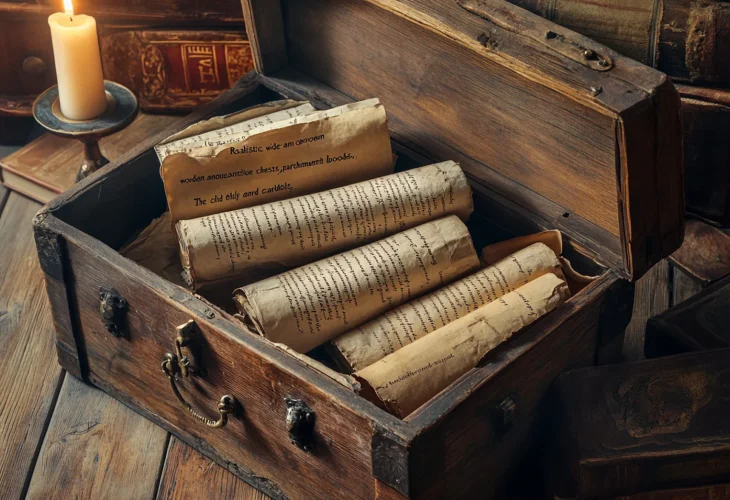History and Archaeology
The Locked Box Mystery of the Ramchal’s Writings
A locked crate in Padua held the Ramchal’s writings for generations, hidden from his critics and preserved by his students

On the third day of Av in 1730, the elderly Rabbi Yeshaya Bassan, the chief rabbi of Padua, was seen in the Jewish quarter following two porters carrying a large, heavy wooden crate. They made their way to the home of Moshe Alperon, one of the wealthiest members of the community. The porters placed the crate in a designated room, and Rabbi Bassan personally locked it with two locks giving one key to the head of the local yeshiva and the other to a respected banker. With that, the house was closed up and life in the quarter resumed as usual.
But what was inside this mysterious crate, and why the formal locking ceremony?
The crate contained the handwritten manuscripts of Rabbi Moshe Chaim Luzzatto, known as the Ramchal, a Torah prodigy who had mastered the Talmud, the Zohar, and the writings of the Ari by the age of fourteen. Gifted with a beautiful singing voice, he served as the cantor in Padua’s Ashkenazi synagogue and was a devoted student of Rabbi Bassan. By eighteen, he was already an accomplished scholar and a medical student at the University of Padua.
At nineteen, he received rabbinic ordination and began teaching students alongside his close friend and self-declared disciple, Rabbi Moshe Valli. Together they founded a group called The Seekers of Hashem, whose members studied the Zohar around the clock in scheduled shifts. Ramchal began writing extensively, particularly on the deepest areas of Kabbalah. At age twenty, he claimed to have received spiritual guidance from a heavenly mentor, further inspiring his prolific output.
One of his students, Rabbi Yekutiel Gordon, eager to share Ramchal’s brilliance, wrote to prominent European rabbis inviting them to learn from him. Instead of admiration, suspicion arose. Some rabbis viewed the young scholar — with his university education and mystical claims — as dangerously similar to the false messianic movements of the past, especially the Sabbateans who had twisted Kabbalah for their own purposes. Among the loudest critics was Rabbi Moshe Chagiz.
A gathering of Venetian rabbis found no fault in Ramchal, but they deferred to his teacher, Rabbi Bassan, to oversee the matter. While deeply admiring his student, Rabbi Bassan investigated thoroughly. Opposition still grew, fueled by excerpts from Ramchal’s writings taken out of context. In an attempt to end the conflict, Rabbi Bassan proposed a compromise: Ramchal would vow to stop writing, and in return, the accusations would cease.
Part of the agreement was that all his existing manuscripts, hundreds of them would be locked away and kept unpublished. And so, in a quiet but historic act, the crate of writings was sealed and stored in Moshe Alperon’s home.
Later, the Ramchal immigrated to the Land of Israel, settling in Safed and then Acre, where he taught Torah for a short time before dying tragically, along with his family, in a plague. His writings remained hidden, carefully guarded by loyal students who feared his opponents might destroy them.
Over time, the tide turned. The Vilna Gaon, one of the greatest Torah scholars in history, declared that if the Ramchal were alive, he would have traveled to learn from him. Leaders of the early Hasidic movement also embraced his works. Slowly, the manuscripts began to surface, some through devoted disciples, others in later generations through the efforts of scholars like Rabbi Chaim Friedlander.
Today, the Ramchal’s writings are recognized as treasures of Jewish thought, exploring Kabbalah, ethics, and the deepest layers of Torah with clarity and depth. That heavy wooden crate in Padua, once locked to protect them, ensured they would survive to inspire generations to come.

